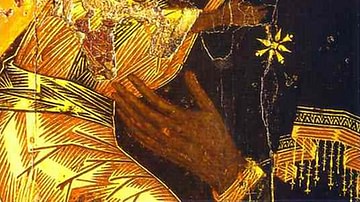Search
Summary 
Loading AI-generated summary based on World History Encyclopedia articles ...
Search Results

Definition
Treaty of Brest-Litovsk
The Treaty of Brest-Litovsk, signed on 3 March 1918, outlined the harsh conditions under which the crumbling Russian Empire withdrew from the First World War (1914-18). Negotiated by Vladimir Lenin (1870-1924), the leader of Soviet Russia...

Video
History vs. Vladimir Lenin - Alex Gendler
View full lesson: http://ed.ted.com/lessons/history-vs-vladimir-lenin-alex-gendler Vladimir Lenin (1870–1924 CE) overthrew Russian Czar Nicholas II (1868–1918 CE) and founded the Soviet Union, forever changing the course of Russian politics...

Definition
Kievan Rus
Kievan Rus (862-1242) was a medieval political federation located in modern-day Belarus, Ukraine, and part of Russia (the latter named for the Rus, a Scandinavian people). The name Kievan Rus is a modern-day (19th century) designation but...

Article
The Murder of the Romanov Family
The brutal murder of the entire Romanov family was the culmination of deep discontent across the Russian Empire with the persistently autocratic rule of Tsar Nicholas II (reign 1894-1917). Following the disaster of the First World War (1914-18...

Definition
Tsar Nicholas II - Last of the Romanovs
Tsar Nicholas II (reign 1894-1917) was the last of the Romanov emperors, murdered along with his family during the turmoil of the Russian Revolution in 1917. Insisting on maintaining as far as possible the autocratic rule begun by his ancestors...

Image
Vladimir I Converting to Christianity
A 19th century CE fresco by Viktor Mikhailovich Vasnetsov in kieve depicting the baptism of the Kievan Rus leader Saint Prince Vladimir (r. 980-1015 CE)

Image
The Vladimir Icon
The Byzantine icon of the Virgin and Child known as the Vladimir Icon, painted c. 1131 CE in Constantinople. Restoration following fire damage means that only the faces are original. (Tretyakov Gallery, Moscow)

Definition
Bloody Sunday in 1905 - The Massacre at the Tsar's Winter Palace
Bloody Sunday on 22 January 1905 was the massacre of peaceful and unarmed protestors by soldiers outside the Winter Palace in St. Petersburg, Russia. The crowd of workers and their families were led by Father Georgy Gapon (1870-1906), who...

Video
White Monuments of Vladimir and Suzdal (UNESCO/NHK)
These two artistic centres in central Russia hold an important place in the country's architectural history. There are a number of magnificent 12th- and 13th-century public and religious buildings, above all the masterpieces of the Collegiate...

Definition
Tsar
Tsar (also czar) is a Slavic term derived from the Latin caesar. Ivan III (Ivan the Great) (r. 1462-1505) was the first Russian ruler to begin using the title of tsar during his reign instead of the title Grand Prince of Moscow. His grandson...